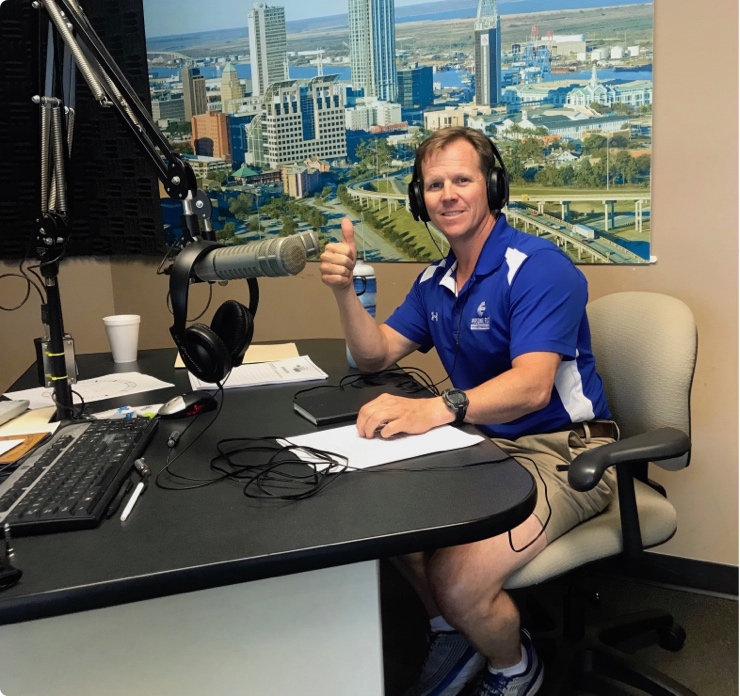Mobile Location: 251.341.0927 | Daphne Location: 251.651.0927
Mobile Location: 251.341.0927 | Daphne Location: 251.651.0927
The Lowdown on Wellness | Personal Edge Fitness
An Introduction to Wellness with Personal Edge Fitness
 Welcome to the inaugural entry of the Personal Edge Fitness Blog, where I, Garrett Williamson, your host, will be sharing insights from my experience. Now, obviously, this is going to be about health, wellness, and fitness, and we’re going to cover all aspects of nutrition and whatnot. However, the thing I’m most concerned about with my clients, and with anybody that we get a chance to work with, is finding their own personal level of wellness. Let’s dive into my background and why this blog matters.
Welcome to the inaugural entry of the Personal Edge Fitness Blog, where I, Garrett Williamson, your host, will be sharing insights from my experience. Now, obviously, this is going to be about health, wellness, and fitness, and we’re going to cover all aspects of nutrition and whatnot. However, the thing I’m most concerned about with my clients, and with anybody that we get a chance to work with, is finding their own personal level of wellness. Let’s dive into my background and why this blog matters.
A Brief Introduction to Garrett Williamson
Let me introduce myself properly. Armed with a Bachelor of Science in Exercise Science from the University of Georgia and a master’s degree in Fitness Management from the United States Sports Academy, I’ve spent the last 28 years honing my craft as a personal trainer. From my collegiate days as a pole vaulter to competing in national championships and world championships, my journey has been fueled by a passion for fitness and a commitment to excellence.
The Mental Landscape of Wellness
At the heart of Personal Edge Fitness lies a profound belief: true wellness transcends mere physicality. It’s about fostering a deep sense of satisfaction, confidence, and fulfillment in one’s own skin. Whether it’s shedding pounds, overcoming injuries, or simply reclaiming a zest for life, our clients are driven by inner motivations that extend far beyond the surface.
Delving Into the Dimensions of Wellness
Dr. Bill Hettler’s groundbreaking model of wellness, comprising six dimensions—Occupational, Physical, Social, Intellectual, Spiritual, and Emotional—serves as our guiding light. Each dimension represents a facet of human experience, intertwining to form the tapestry of our overall well-being. Understanding and nurturing these dimensions is essential to achieving true harmony in life.
The Quest for Meaningful Fitness
In a world inundated with fitness fads and trends, finding the right exercise regimen can feel like navigating a maze. But here’s the secret: it’s not about what’s objectively “best”; it’s about what resonates with you on a deep, personal level. Whether it’s the adrenaline rush of a sprint, the tranquility of yoga, or the camaraderie of group fitness, meaningful exercise is the cornerstone of lasting change.
Steps Towards Wellness: A Roadmap to Success
Embarking on a journey towards wellness requires a clear roadmap. From identifying obstacles to setting tangible goals and crafting a detailed plan of action, each step is vital in propelling you towards your desired destination. But remember, success isn’t just about reaching the finish line—it’s about embracing the journey and celebrating every milestone along the way.
-
Identify Your Hindrance:
- Understand what’s holding you back or driving you forward.
-
Seek Meaningful Solutions:
- Look for exercises or activities that align with your values and goals.
-
Define Your Goal:
- Clearly outline what success looks like for you.
-
Set a Timeline:
- Establish realistic deadlines to keep yourself accountable.
-
Make a Plan:
- Develop a detailed strategy for achieving your goals.
-
Take Action:
- Execute your plan with determination and consistency.
Illuminating Success Stories
At Personal Edge Fitness, we’ve had the privilege of witnessing countless transformations—stories of resilience, determination, and triumph. From individuals reclaiming their health after years of neglect to athletes pushing the boundaries of human potential. These stories inspire us to continue our mission of empowering individuals to prioritize their health.
Embracing the Journey
In conclusion, the path to wellness is as diverse as the individuals who tread it. Amidst the noise of misinformation and external pressures, it’s crucial to stay true to yourself, your goals, and your values. In the journey toward wellness, misinformation and external hindrances can often cloud our judgment. However, with a clear understanding of our goals and a personalized approach to fitness, we can overcome these challenges and thrive. So, let’s embark on this journey together, armed with knowledge, determination, and an unwavering commitment to personal growth.
Thank you for joining me on this voyage of discovery. Remember, your wellness is worth every step of the journey.
Thanks for reading the Personal Edge Fitness Blog, by Garrett Williamson. Ask questions by calling 251-278-EDGE (3433) or message us on Facebook and Instagram @PersonalEdgeFitness or @TeamPE on Twitter and visit us at PersonalEdgeFitness.com
